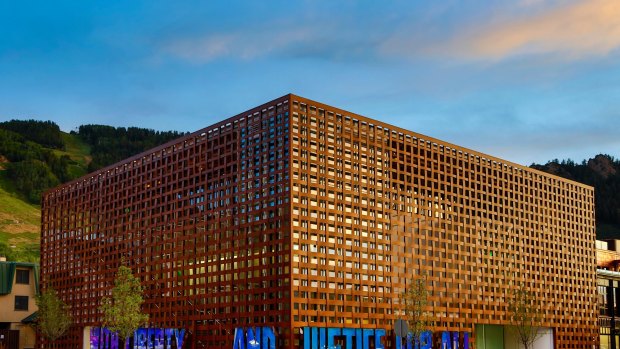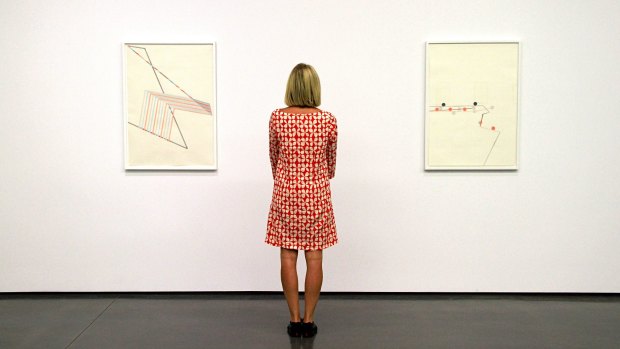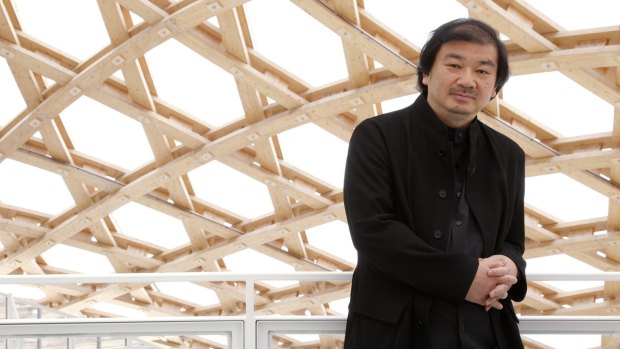This was published 9 years ago
Aspen Art Museum, Colorado, USA: The museum dividing America's wealthy resort town
Famous as a ski resort, Aspen is now making its name in the art world, writes Sheriden Rhodes.

Aspen Art Museum by architect Shigeru Ban.Credit: Alamy
When Shigeru Ban first arrived at the site of the proposed new Aspen Art Museum he was nonplussed. Not a fan of monumental architecture, initially he wasn't interested in the nondescript site. It wasn't until the Pritzker prize-winning architect was taken up high in a neighbouring building, that it made sense to him. From there he devised a solution for the downtown Aspen site that featured no ground floor aspect, and required the maximum gallery space. He did this by inverting the entrance and setting it on the rooftop. Which is perhaps not surprising, given the swanky ski town is all about the Rocky Mountains, which majestically surround Aspen itself.
In an ideal world, the Japanese architect, wants everyone to start from the top of the minimalist style building, basically a glass box nested in a resin infused paper lattice screen and topped with a timber truss roof, and work their way down, just like you would on a ski slope. Arriving visitors are meant to ascend, as on a ski lift or gondola, via a huge glass elevator, or a grand sweeping staircase, to the uppermost level. Heidi Zuckerman Jacobson, the AAM's CEO and curator, admits in practice, you can't compel people to follow the architect's reversed sequence. Many visitors, as we see firsthand, start at the bottom with the first gallery they enter at street level.
A huge fan of Ban, Heidi was intrigued by the architect's submission from the get go. Following a lengthy selection process, and a trip to Ban's Tokyo office, the Japanese architect was unanimously chosen for the project eight years ago - before he became known as a prodigy of humble architecture and humanitarian building structures in the wake of natural disasters. The $45 million museum, which replaces the 35-year-old AAM on the banks of the Roaring Fork River, is an astounding mesh of materials that pushes the envelope. It's Ban's first American museum, and one that has divided the wealthy resort town.

Cultural divide: Inside the museum. Credit: Sheriden Rhodes
When I meet the petite and dynamic Zuckerman Jacobson, tanned and wearing an eye catching red and white dress, she shows no visible sign of the strain of opening the contentious museum. Everyone in the town, with its charming Western Victorian buildings and unremarkable ski condominiums, has an opinion of the boxy 33,000-square-foot museum spread over three levels. "I like it's contemporary look; it's cool," a hotel concierge tells me, but he appears to be in the minority. Others claim the building is out of scale to the small town's brick-faced, late 19th century buildings. Some detest the lattice like exterior and in the latest controversy the museum is in hot water over an exhibition featuring live tortoises wearing iPads. Whichever way you look at it, it's got everybody talking.
When I visit, on a blue, cloudless day, shortly after the museum's opening on August 9, we head straight for the top, just the way Ban intended. Tables of men and women are happily lunching at the rooftop So café with its expansive views of Aspen Mountain and Independence Pass. A rooftop sculpture garden offers unhindered views of Aspen's main ski slope, and in addition to the café there's a bar and an outdoor screening space. Most impressive is the exposed three-dimensional, truss ceiling – a remarkable feat of architecture, woven on site with not a single nail or screw.
From Aspen's only public rooftop space, Jacobson explains the complexities of assembling the woven screen exterior onsite, a paper tube façade that Ban designed to give a sense of movement and to mimic the imperfections in old brick. "It seems like a grid but it's actually not," she tells us as we descend the grand staircase, where a glass partition divides the lattice screen exterior and the interior. Cleverly the staircase feature snow-melt stairs and while you ascend or descend you can see the mountains around you. It provides both exterior access to the public roof and interior access to the galleries.

Japanese architect Shigeru Ban.Credit: Reuters
The six galleries themselves are purposefully bland: white walls and not a single switch or sensor. Natural light features in four of them. The museum will have no permanent collection, and when we visit an exhibition of Ban's humanitarian work is on show. This is the one that most piques my interest. True to size replicas of Ban's groundbreaking designs for refugee shelters, and the design for Christchurch's Cardboard Cathedral are on display. Visitors are able to walk around as well as enter four of Ban's innovative designs for humanitarian relief – most of which he funds, or find funds for, himself.
On ground level is the AAM's headlining inaugural exhibition by Yves Klein and David Hammons, an unprecedented coupling of two boundary-pushing artists. The exhibition is designed to create a dialogue between the pair's decidedly different work. A vivid, almost eye-piercing, sponge relief by Klein is hypnotic. The exhibition compares Klein's Fire Paintings and his signature Yves Klein Blue monochromes with Hammons' Basketball and Kool-Aid Drawings, finding a common thread with each artists' transformation of everyday objects and materials into meaningful artworks. Zuckerman Jacobson tells me it's the most significant show she'll ever do. "It's an undoable building, so I want to show undoable work," she said.
Historically, the ski town was designed with the 'Aspen Idea' (embodying mind, body and spirit) as its foundation, creating a blueprint for almost every other subsequent resort town. Reborn from a silver mining town to ski resort in the 1940's, it was moulded into a cultural centre, nurtured by Chicago industrialists Walter and Elizabeth Paepcke. Ban's provocative museum not only raises the erudition of this already exceptionally cultured town but places Aspen firmly on the international art map.
The writer was a guest of Aspen Chamber and Snowmass Tourism.
TRIP NOTES
MORE INFORMATION
VISITING THERE
Entry to the Aspen Art Museum is free. Opening hours are 10am-8pm Tuesday-Sunday; closed Mondays. See aspenchamber.org.
STAYING THERE
The Little Nell offers Town Side rooms starting from $US333 in low season through to $US980 per night (peak winter season). See thelittlenell.com. The Westin Snowmass Resort, 20 minutes drive away, offers premium rooms from $US176 in low season. See westinsnowmass.com.
GETTING THERE
Qantas operates double daily A380 services from Sydney and Melbourne to Los Angeles, with daily connections on American Airlines to Aspen. See qantas.com.
FIVE OTHER SHIGERU BAN BUILDINGS
The Centre Pompidou, Metz, France
The annex for the Pompidou Center in northeastern France was inspired by the airy bamboo weave of a Chinese hat Ban bought in Paris. It features an elaborate hexagonal timber grid shell, covered in a translucent white Teflon-coated membrane and a 77-metre spire (a nod to 1977, the year the original Centre Pompidou opened).
The Metal Shutter Houses, New York
Ban's first condominium residences in the US feature nine units in an 11-story structure, including a ground floor gallery. The building incorporates a layered façade with a unique rolling shutter system that fastens across the apartments at night, reflecting the industrial past of the Chelsea and the Meatpacking District.
Tamadia Office Building, Zurich
Swiss media company Tamedia's seven-story hub, designed by Ban, possesses an innovative, timber, interlocking structural system, with no metal joints – a feat of wooden engineering.
IE Paper Pavilion, Madrid
The IE Business School of Madrid's novel Paper Pavilion, designed by Ban, is a temporary and airy structure made of 173 paper tubes held together by timber joints that rest on paper columns.
Shigeru Ban's Cardboard Cathedral, Christchurch NZ
Ban designed the simple A-frame structure largely from prefabricated elements after the devastating earthquake in 2011. Constructed with 98 cardboard tubes wrapped around a screen of colorful, triangular glass windows, the cathedral can hold up to 700 people and is expected to last half a century.
Sign up for the Traveller Deals newsletter
Get exclusive travel deals delivered straight to your inbox. Sign up now.